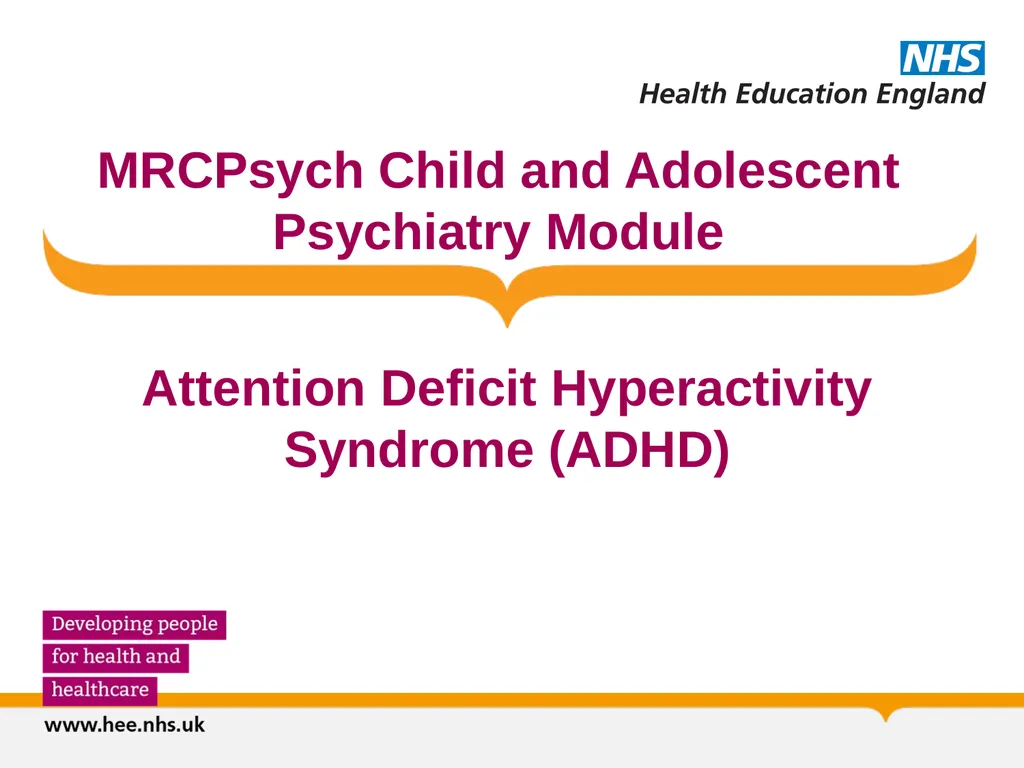
MRCPsych Child and Adolescent Psychiatry Module
Author: karlyn-bohler | Published: 2025-08-04
Description: MRCPsych Child and Adolescent Psychiatry Module Attention Deficit Hyperactivity Syndrome (ADHD) CAMHS Module: ADHD Aims and Objectives The overall aim is for the trainee to gain an overview of ADHD By the end of the session trainees should:
Download Presentation
Download the PPT/PDF: Download
Transcript:
Loading transcript…